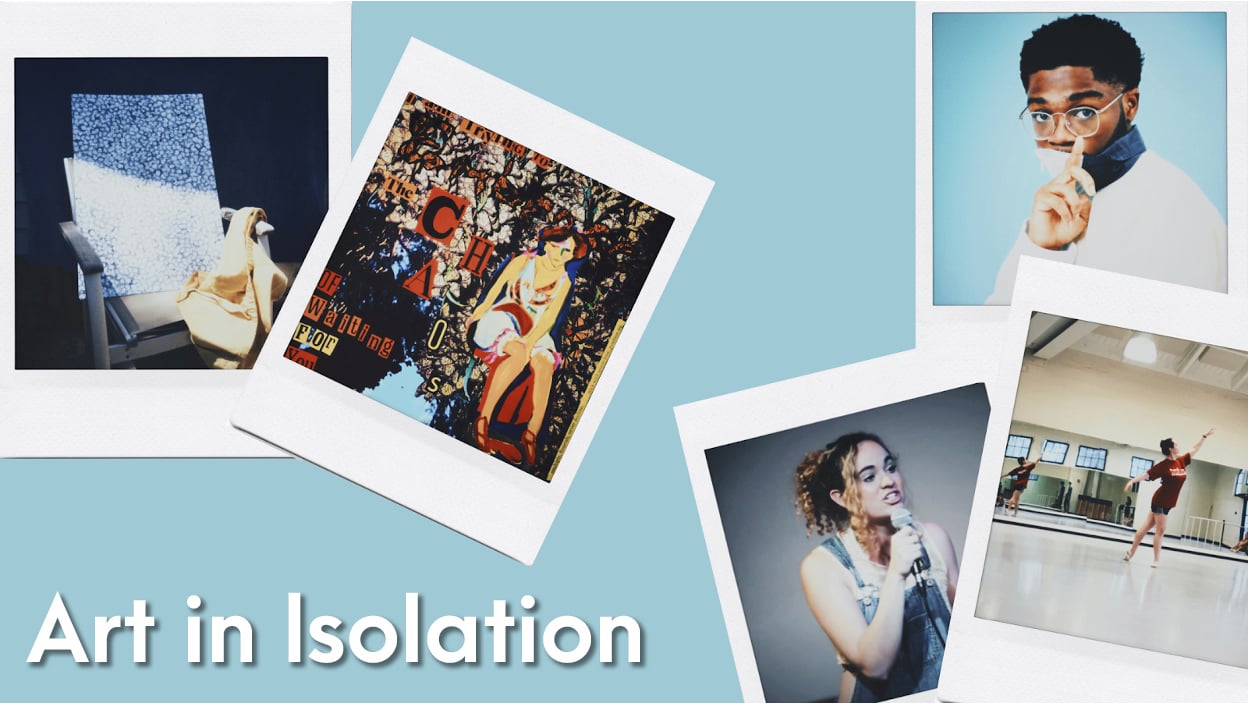
Dancing feet on carpet flooring. Live concerts for an invisible audience. Images, words, old memories — prompted by introspection — unloaded onto a canvas, a page. This is the “new normal” for student-artists amid the COVID-19 pandemic: with limited access to resources like rehearsal spaces and art supplies, visual and performing artists are finding innovative ways to make and share their art. Below are their stories.
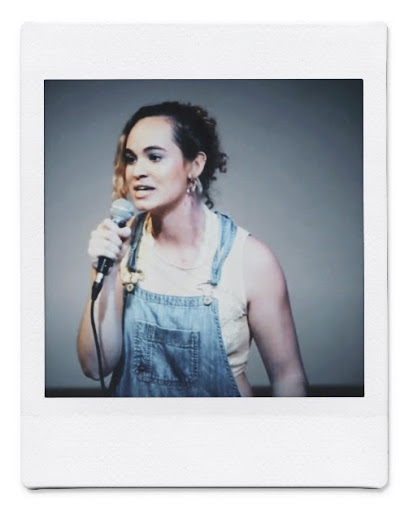
But there’s another crucial aspect to her comedy besides eliciting audience laughter. Lyle sees comedy as a means of exploration. She notes, “The role of comedy is just to relieve tension in life … Because whether we are aware of it or not, we carry tension.” Stand-up, as a medium, is an escape from reality, a way to confront the absurdities of life.
Lyle confronts the absurdities that come with her complex identity. The comedienne is biracial, and she finds humor in dealing with her race.
“As a biracial person, I belong to a niche community that is both very relatable to some people and very different to others,” Lyle said. “There’s a trope that mixed people love talking about how they are mixed, and I just find it funny to make fun of myself in that aspect.”
She also uses stand-up to reckon with the tension between her queer identity and her Christian upbringing. In Lyle’s experience, the church made it a point to invalidate the experience of queer people. Humor became her way of coping. She describes it as “giving herself permission” not to take the tension in her life too seriously.
Understandably, her artistic medium looks a little different during the pandemic. While stand-up doesn’t really translate to online formats, she’s able to maintain her comedic skills on Zoom open nights. But she doesn’t limit herself to one form of comedy. She also uses her Twitter account to put out some of her funniest material.
There was a period during the pandemic when Lyle explored other forms of expression. She tried writing reflective essays and journals that were more serious than comedic. But she soon realized how essential humor is to her sense of self.
“I’m never gonna stop doing comedy,” she said. “I’m not going to wake up and think life is not absurd.”
For right now, Lyle is focused on self-exploration. She wants to continue experimenting with her craft, even with the limitations of quarantine. And in the process of creative experimentation, she continues to find her identity.
“I think every artist has a pseudo-spiritual goal,” Lyle said. “My pseudo-spiritual goal is to find my voice.”
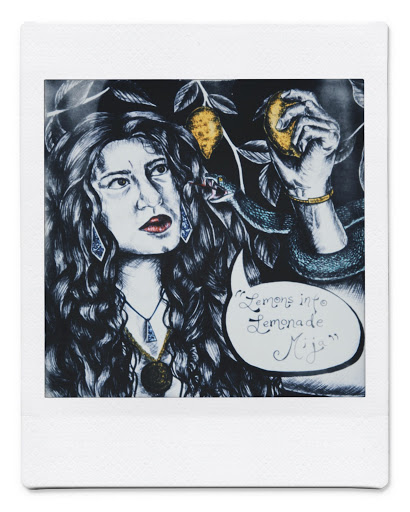
As a visual artist, photographer and spoken word poet, Ibarra has expressed herself through her art for years, from capturing scenes at protests to keeping her favorite lines and lyrics in a “Jar of Bars.”
For the past several months, Ibarra has stayed on campus due to special circumstances. “I’ve been doing a lot of introspection,” Ibarra explained. “I’ve been pretty isolated for six months — I spend most of my days in my room and on my own, so I’ve gotten to know myself a lot better as a person.”
Ibarra stated that she uses mostly recycled canvases, so her access to resources has not changed much. However, Ibarra says the pandemic has fomented in her a “creative shift as an artist.”
With a pleasing yet repetitive view of campus, Ibarra was faced with the issue of, “How do I find inspiration when I’m seeing the same things every day?”
“This [creative process] has been manifesting itself in my art — I’ve been writing poems about people I haven’t spoken to in years,” Ibarra said. “Not only using art as a way of healing trauma, but also appreciating people in my life, dedicating time to let them know how much I love them.”
One of the things Ibarra has learned is that even though she is physically separated from her Mission district community right now, her loved ones are with her all the time. This emotion is what fuels her works — and rather than make art solely for herself, Ibarra creates with themes of self-love, healing and family in hopes that someone else will understand.
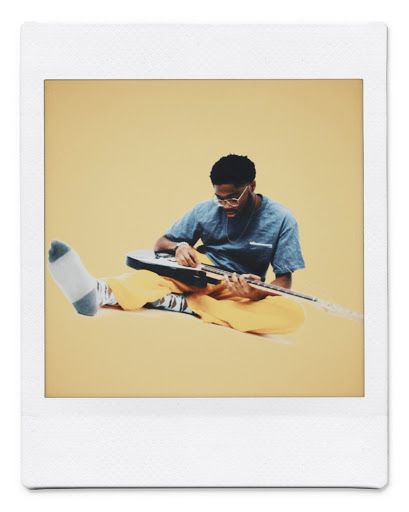
The producer received his middle school education in Nigeria, where he learned how to play the guitar, the piano and the drums. “It felt natural to continue it at Stanford,” he said.
Olujide always tries to tell a story with his songs, which include “Deciduous” and “Evergreen.” He credits classes at Stanford like “Crafting Concept Albums” with helping him develop his writing skills.
“I try to write songs that are meaningful and that sound good,” Olujide said. “If you listen to my music, it does not focus too much on my vocal abilities, but on other aspects instead.”
Olujide produced “Deciduous” and “Evergreen” right after Stanford sent home all students without extenuating circumstances in March. After weeks of nothingness, Olujide said that the new concepts were an inspiration from God. Despite the pandemic, he mentioned that there were no major shifts in his songwriting process and that he worked well in isolation.
Olujide recounted a number of times during the pandemic when he had a new idea for a potential project. However, he said that producing music is a lifelong creative process and is not always about having a set time.
“If I am at the gym and thought of a cool melody, I would record it before I go to bed. If I find an inspiration, I would write it down,” the artist said.
“Although it has been tough to not see your friends, it has been such a productive time creatively — a time to reflect and to not be distracted by the craziness of the world,” the artist expressed.
Olujide also acknowledged the mystery behind the music industry, noting that it seems grandiose and that schools should teach classes about it. “Even people within the music industry do not even know how it works. Music influences people in many ways,” he said.
The artist advises fellow singers to not rush in finding their authentic sound. He said musicians should be creating songs for themselves and that they should also push their boundaries.
Olujide concluded with an encouraging message for those having a hard time during the pandemic: “You are strong enough to get through it. Things will get better. Don’t get to the point of no return because of the situation.”
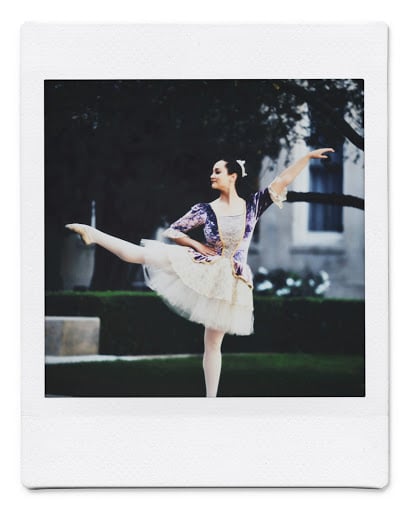
Her latest obstacle, the COVID-19 pandemic, is perhaps her greatest yet. In the face of complications such as time zone differences and lack of studio access, CBC still hosted a virtual Copelia last spring and Graber remains optimistic about future productions.
With over 16 years of dance experience, her passion for the art in its many forms — ballet especially — stems from her love of music. Inspired by her family’s musical background and her own experience as a pianist, Graber believes her choreography process begins with melody, movement being a visual extension of this rhythmic connection.
“[Music] just kind of became me in a lot of ways, or I have become it. Expressing myself through music especially has been really, really important for me, and especially during the pandemic,” Graber said. “Everything is stressful, so I want to find a way to de-stress and even though I don’t have a perfect space to be dancing in at home, I’m still trying to find ways to try out my own choreography.”
Graber credits the individualistic nature of ballet for encouraging her to expand her musical repertoire and develop her personal choreography style.
“Ballet just in general is a very self-focused art because you’re kind of working with yourself and there’s competition with others,” she said. “If you’re kind of trying, you’re striving for the top.”
However, Graber notes that pandemic struggles have seemed to upend this “self-focused” mentality in favor of greater social connection between isolated dancers.
“My dancing space is on carpet, and it’s difficult to really train my technique and kind of push myself like I can in an actual studio. So there was kind of a focus and shift from that aspect of ballet towards more of a community.”
Despite living in quarantine without scheduled events or rehearsals, Graber is confident that CBC members are closer than ever before.
“We have a very strong community already. But especially with the turn to everything being virtual that’s kind of the main focus, like we just want to be there for each other, we all love each other. So we’re doing as many virtual events as we can, even if we can’t be dancing with each other.”
This fall, Graber hopes to continue the CBC’s annual traditions, highlighting potential plans for remote freshman auditions and a virtual Nutcracker show.
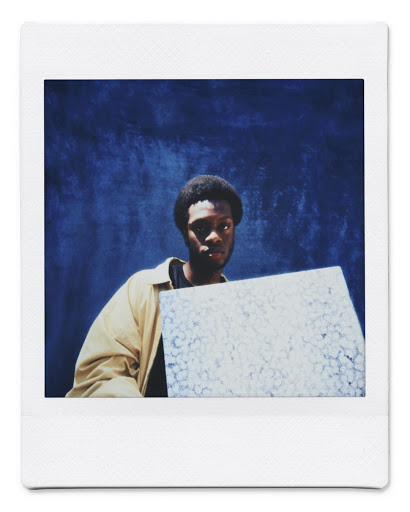
Osawemwenze knew what he wanted to pursue before he even knew the name for it. He wanted to draw and transcribe reality in its truest shades and syllables. One gloomy night in June, while streets and social media were roaring with fury and injustice, he wrote a poem that showcased his naked thoughts and feelings, one that inspired his own creation. Then, came the rant, reflection, introspection, raw inspiration, and social examination of issues.
“A coming of age, but irl,” is Osawemwenze’s new project, which he calls “the truth in the form of a vocal novel.” It is a podcast that portrays the complex identities that influence our daily life and culture on and off the internet. Osawemwenze mentioned that he considers himself eternally privileged to share his perspective and deep analysis of complex issues such as BLM, pop culture and the COVID-19 pandemic.
While in quarantine, Osawemwenze was fueled by this time of disconnect from society to further connect with the present, with art, and to modify “the normal realm of what [his] routine would be.” “A coming of age, but irl” was a pending project that he wished to realize regardless of the pandemic, “to center the perspectives of the marginalized voices that have been vocal about cultural significance.”
Osawemwenze not only utilizes words to articulate the current situation, but also expresses his thoughts through visual art. His work is fascinating — abstract art that is not oversimplified but only explained through words he adds to accompany his pieces.
Owing to the pressure to pursue a career in STEM and achieve professional success, Osawemwenze’s drive for the artistic world was quiescent as a child. However, ever since art has marked his journey, he has utilized it as a voice to represent the evolution of a first-generation Nigerian American, and as a lens into the daily concerns of an awakened youth.
His artistic sense first came to life through a couple of lines intertwined on white canvas. Back in June, his first sketch then transformed into his art piece titled “we need space”: A cluster of emotionless faces lacking autonomy (space) due to the eurocentric standards of beauty, life and behavior. Osawemwenze has not planned to make art during quarantine; instead, he plans to use this time to discover his creative journey and in turn, discover pieces of who he is.
There is yet more uncertainty ahead, and projects are very likely to shift. In Osawemwenze’s opinion, avoiding a set plan will allow him to dive deeper into his creative world and not put himself in a box.
“Am I the director of my own life?” Osawemwenze asks in a poem also titled “a coming of age, but irl.” “Am I the main character, the heroine, the rebel, the youthful fluter?”
Contact Chasity Hale at chashale ‘at’ stanford.edu, Robert Castaneros at ‘rcastane ‘at’ stanford.edu, Nicole Tong at nwtong ‘at’ stanford.edu, Ron Rocky Coloma at rcoloma ‘at’ stanford.edu, Carissa Lee at carislee ‘at’ stanford.edu andTiffany Saade at tiff24 ‘at’ stanford.edu.